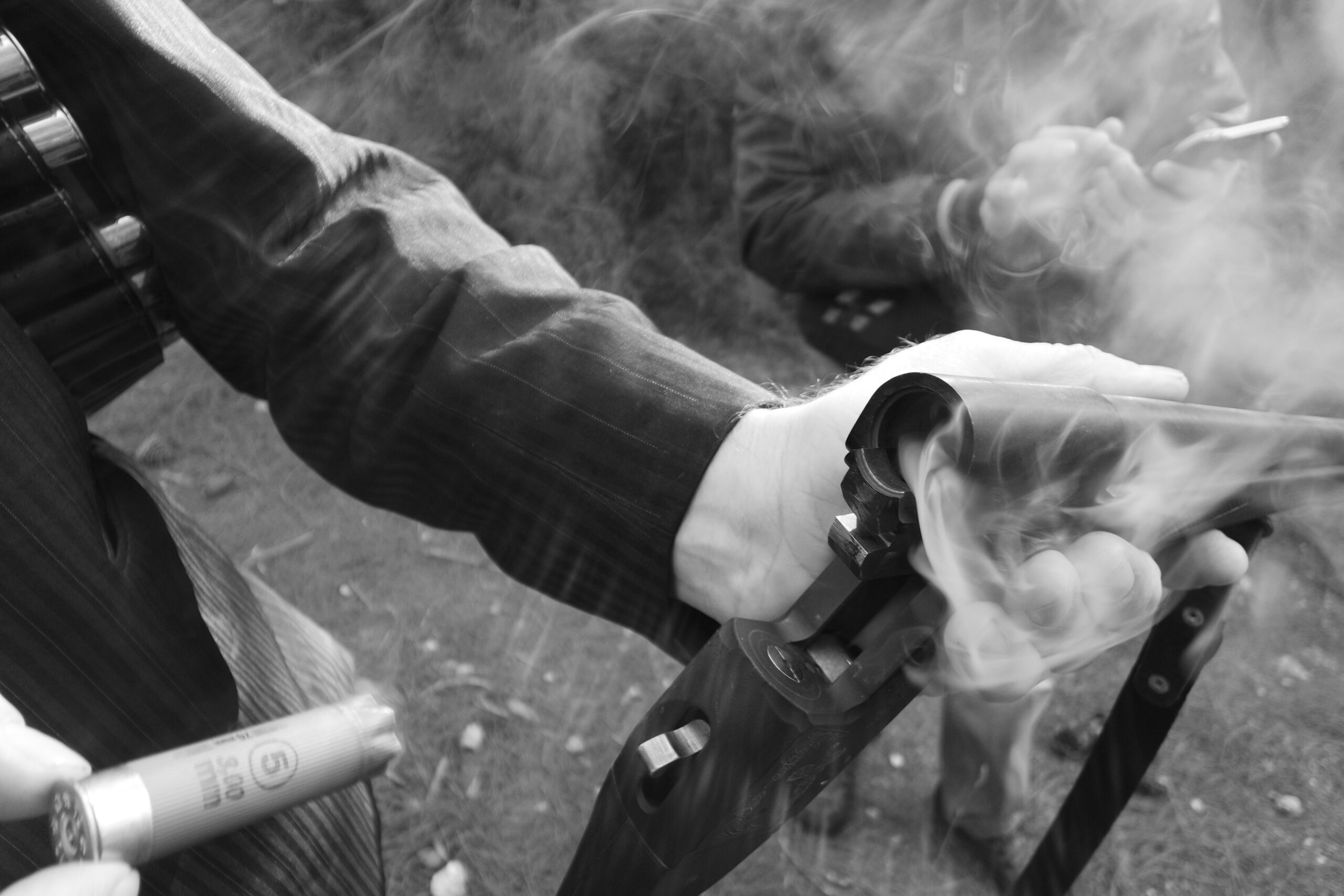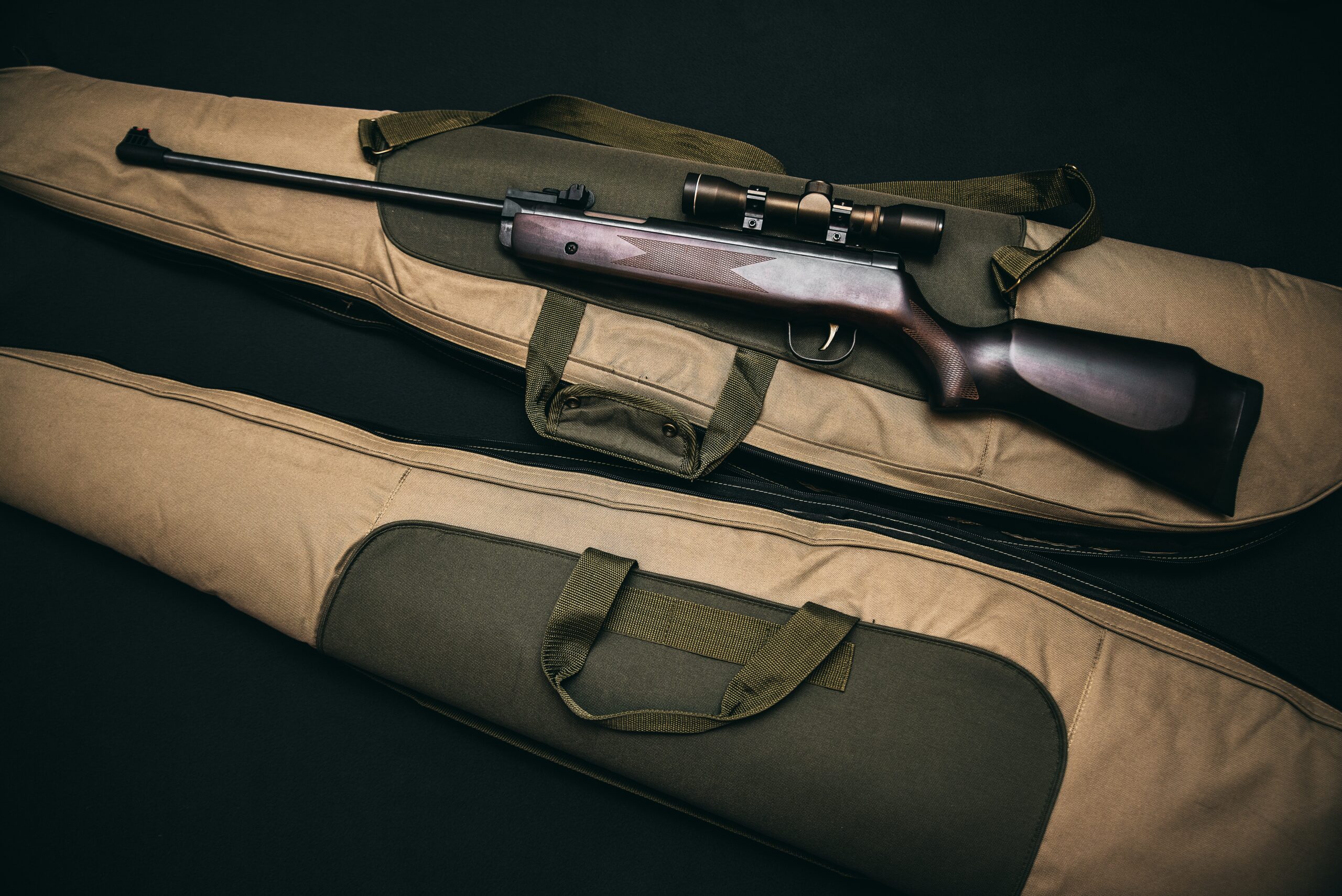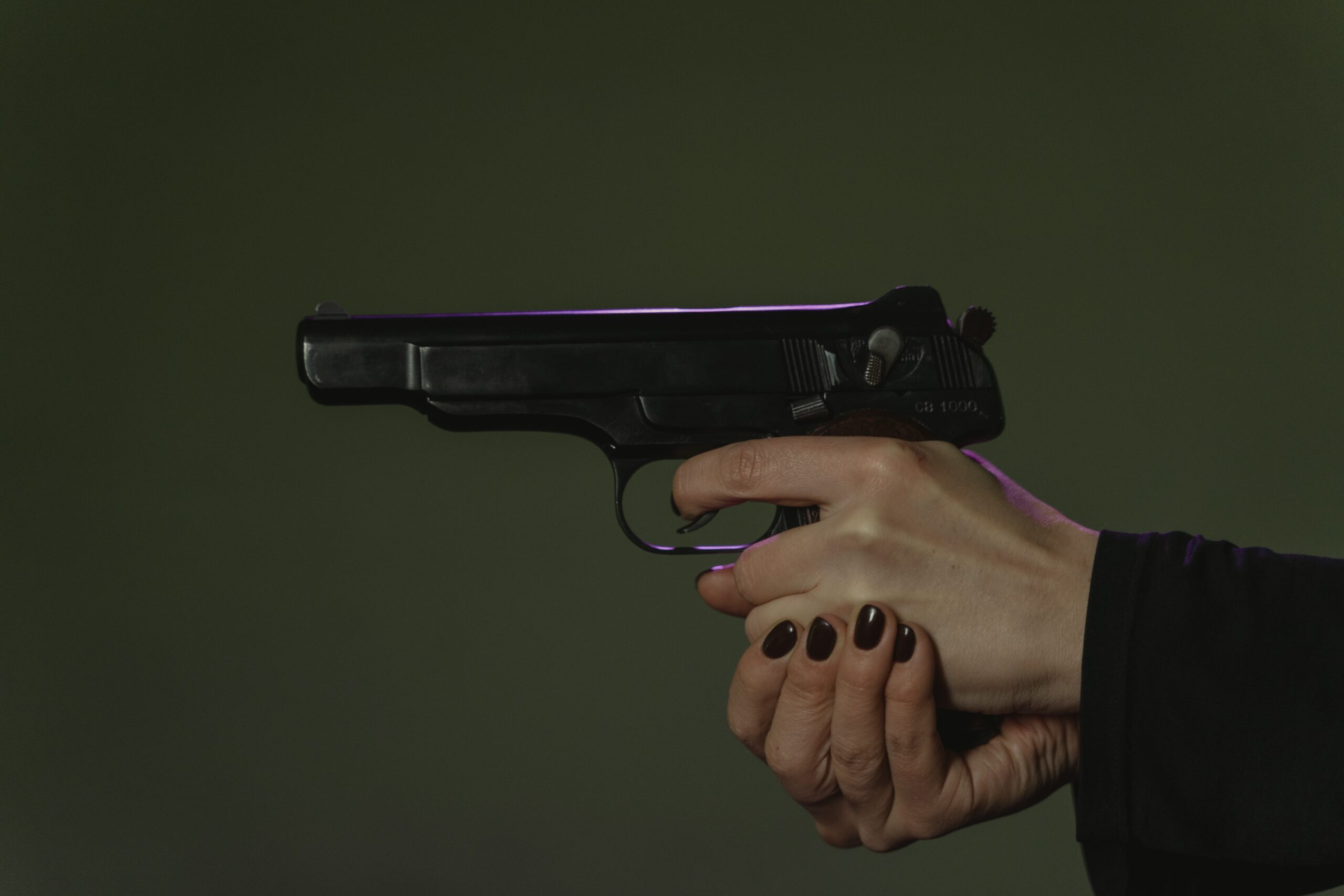When it comes to what are the two basic styles of firearm actions, there are two basic styles of actions used by gun owners. These styles dictate the way in which a user loads, fires and expels ammunition from their firearm. Understanding these two fundamental types can help you decide which type is best suited for your intended use, as well as ensuring that you’re practicing safe shooting techniques. In this blog post we’ll cover both single action guns and double action ones—including an analysis of what distinguishes one from the other—so that you can be informed when making decisions about purchasing or using a gun. So let’s dive in.
Contents
Understanding The Definition
What Are Firearm Actions?
Before learning what are the two basic styles of firearm actions, firearm actions refer to the mechanisms that allow a firearm to function and fire a bullet. Every firearm action has an impact on the weapon’s accuracy, reliability, and ease of use. Understanding the different types of firearm actions is essential for anyone interested in firearms, whether it be for hunting, self-defense, or recreational shooting.

What Are Their Crucial Role In The Operation Of Firearms?
Firing pins play a critical role in the operation of firearms. These small metal components are responsible for striking the primer of a cartridge, igniting the gunpowder and propelling the bullet forward. Without a properly functioning firing pin, a firearm is essentially useless.
What Are The Two Basic Styles Of Firearm Actions?
Bolt Action
So what are the two basic styles of firearm actions? Bolt action firearms typically require the shooter to manually operate the bolt handle to extract a spent cartridge casing, feed a fresh round into the chamber, and reset the firing mechanism before being able to fire again. Bolt action firearms are generally considered more accurate than their semi-automatic counterparts due to fewer moving parts and less opportunity for mechanical failure or inaccuracy caused by the recoil when firing multiple shots in quick succession.
Semi-Automatic
Semi-Automatic firearms use the energy of firing a round to eject the empty cartridge case, load a fresh cartridge into the chamber, and cock the action for the next shot. This process is repeated when every trigger pull results in a single fired round. Semi-automatic firearms offer several advantages over their manual counterparts including faster rates of fire, less fatigue on shooter’s arms, and greater accuracy due to fewer moving parts within the mechanism. Some have argued that semi-automatic guns can be more dangerous because they can fire off multiple rounds.

Why Should You Know About Firearm Actions?
Knowing what are the two basic styles of firearm actions can help you make informed decisions about which type of firearm may best suit your needs. For example, if you are looking for a firearm for hunting, a bolt action rifle may be the best choice due to its accuracy and reliability. However, if you are looking for a firearm for self-defense, a semi-automatic handgun or rifle may be a better option due to its rapid fire capability. Furthermore, having a thorough understanding of firearm actions can also aid in the safe handling and maintenance of your firearm. By knowing how your firearm functions, you can ensure that you are using it safely and effectively and can properly maintain it over time.
What Are The Pros And Cons Of Firearm Actions?
Manual firearm actions, also known as bolt-action, lever-action, or pump-action, require the shooter to manually cycle the next round into the chamber after each shot. This can be slower than a semi-automatic action, but it also has several benefits.
Manual Firearm
One advantage of manual actions is their reliability. They have fewer moving parts than semi-automatic firearms, reducing the likelihood of malfunctions or jams. They also tend to be more accurate due to the lack of movement caused by the cycling of the action. Additionally, manual actions are often quieter, making them ideal for hunting or other situations where noise may be a concern. However, the slower cycling of manual actions can be a disadvantage in certain situations, such as in self-defence scenarios or when shooting at moving targets. They also require more effort and skill to operate effectively.
Semi-automatic
Semi-automatic firearm actions, on the other hand, automatically cycle the next round into the chamber after each shot. This allows for faster shooting and easier operation. However, there are also some downsides to this style of action. One disadvantage of semi-automatic actions is their potential for malfunctions. They have more moving parts than manual actions, which can increase the likelihood of jams or failures. They are also generally less accurate than manual actions due to the movement caused by cycling the action. Additionally, they tend to be louder than manual actions, which can be a disadvantage in certain situations. Despite these drawbacks, semi-automatic actions are popular due to their ease of use and speed. They are often preferred for self-defence situations or in sports shooting where speed is important.
What Are Popular Examples Of Firearm Actions?
Firearm actions refer to the mechanism by which a gun fires a bullet. There are various types of firearm actions, but two basic styles are particularly popular: the revolver and the semi-automatic pistol.
- Revolver action is based on a cylinder that rotates to bring the next cartridge into alignment with the barrel. Revolvers are often characterized by their durability, simplicity, and reliability. They are commonly used for personal defense, law enforcement, and target shooting. Popular examples of revolvers include the Smith & Wesson Model 686 and the Colt King Cobra.
- Semi-automatic pistol action is based on a slide that operates back and forth to feed a new cartridge into the chamber and eject the spent casing. Semi-automatic pistols are known for their high capacity and fast firing rate. They are used in various applications, such as military and law enforcement operations, competitive shooting, and personal defense. Popular examples of semi-automatic pistols include the Glock 19 and the SIG Sauer P226.
What Are The Applications Of Firearm Actions?
Bolt action firearms are manually operated by the shooter. The shooter must manually cycle the bolt after each shot to eject the spent cartridge and load a new round into the chamber. This style of action is commonly used in hunting rifles, precision rifles, and military sniper rifles. Bolt action firearms are known for their accuracy, reliability, and durability. They are also typically simpler in design and easier to maintain than other types of firearms. Semi-automatic firearms, on the other hand, are designed to automatically load and fire a round after each trigger pull. The shooter does not need to manually cycle the action after each shot. This style of action is commonly used in handguns, rifles, and shotguns. Semi-automatic firearms are popular with law enforcement, military personnel, and civilian shooters for their ease of use, rapid-fire capability, and versatility. They are often used for self-defense, competitive shooting, hunting, and recreational shooting.
What Are The Basic Rules Of Firearms Safety?
As a professional in the field of firearms, it is crucial to understand and adhere to the basic rules of firearms safety. These rules are designed to prevent accidental shootings and ensure the safety of everyone involved.
- The first rule of firearms safety is to always treat every firearm as if it is loaded. Even if you know that the firearm is unloaded, always handle it with the utmost care and respect. This means keeping your finger off the trigger until you are ready to shoot and pointing the firearm in a safe direction at all times.
- The second rule of firearms safety is to always keep the firearm pointed in a safe direction. This means that you should never point the firearm at anyone or anything that you do not intend to safety of everyone around you. Remember to always treat firearms with the respect and care they deserve, and to shoot. It is important to always be aware of your surroundings and be mindful of where the firearm is pointing.
- The third rule of firearms safety is to always be sure of your target and what is beyond it. This means that you should always know what you are shooting at and be aware of what is behind your target. Bullets have the potential to travel a great distance and can cause unintended harm if not properly controlled.
- The fourth rule of firearms safety is to always keep your finger off the trigger until you are ready to shoot. This means that you should never put your finger on the trigger until you are ready to fire. This helps to prevent accidental discharges and ensures that you have complete control over the firearm at all times.
What Are Tips Of Using Two Basic Styles Of Firearm Actions?
Single action firearms require the hammer to be manually cocked before each shot. This means that the trigger serves only to release the hammer and fire the gun. To safely use a single action firearm, always keep your finger off the trigger until ready to shoot. Ensure that the firearm is pointed in a safe direction at all times, and be mindful of any obstructions in your line of fire. Additionally, always keep the gun unloaded until ready to use, and store it in a secure location away from children and unauthorized users. Double action firearms, on the other hand, use the trigger to both cock the hammer and release it to fire the gun. This means that the trigger pull is often longer and heavier than that of a single action firearm. To safely use a double action firearm, always keep your finger off the trigger until ready to shoot. Also, be sure to fully depress the trigger when firing to ensure that the hammer is fully cocked and released. As with single action firearms, always keep the gun unloaded until ready to use, and store it in a secure location away from children and unauthorized users.

Conclusion: What Are The Two Basic Styles Of Firearm Actions?
In summary, firearms are classified based on their actions, which refer to the mechanism in the firearm that loads, fires, and unloads cartridges. The two basic styles of firearm actions are the manual action and self-loading action. Manual actions require the user to manually load each cartridge into the firearm’s chamber and manually eject the spent cartridge after each shot. Self-loading actions, on the other hand, automatically load and eject cartridges after each shot. Self-loading firearms are also known as semi-automatic firearms. In conclusion, understanding the two basic styles of firearm actions is crucial for anyone interested in firearms. Knowing what are the two basic styles of firearm actions can help you choose the right firearm for your purposes.
FAQs: Firearm
What are the different types of firearm actions?
Firearm actions come in various types, including bolt action, lever action, hinge action, pump action, and semi-automatic action. These actions define how the firearm operates and can have a significant impact on its performance. Understanding the different types of actions is crucial for firearm enthusiasts and professionals alike.
What are the most common firearm action types?
Rifles and shotguns have common actions. Single-shot rifles typically use break- or bolt-actions, while repeating rifles encompass bolt-action, lever-action, pump-action, and semi-automatic variations.
What are the names of the 2 types of revolver actions?
Revolvers come in three distinct action types, each defining the gun’s functionality. These action types include Single Action (SA), Double Action (DA), and Double Action Only (DAO). Each action type offers unique characteristics, allowing firearm enthusiasts to choose according to their preferences and needs.
What is double action only?
A double-action, also referred to as double-action only (DAO), is a firearm design that lacks an internal mechanism to keep the hammer or striker cocked (in semi-automatics) or has a fully enclosed hammer and/or lacks a thumb spur, making it impossible for the user to manually cock it (in revolvers).
What is a barreled action?
A barreled action is comprised of an action to which a barrel has been affixed, typically by threading the front section of the action to accommodate the barrel. It is important to note that a barreled action does not encompass a stock or grip, and therefore cannot be handled and fired in the same manner as a complete firearm.
What are the different types of air rifle action?
There are four primary categories of airguns, each employing a distinct firing method. The first category is the Spring Piston, which encompasses air rifles in a variety of forms such as break barrel, side-cocking, and underlever. Moving up the ladder, we have the Nitro Piston, which replaces the traditional spring with compressed gas in the action, offering a higher level of performance. The third category is Pneumatic, while the fourth is CO2-Powered.
What are the different types of 22 rifle actions?
22 rifle comes in myriad iterations, such as bolt-action, pump-action, lever-action or semi-automatic. Most commonly used as a field gun for small game hunting, the rifle is also popular as an all-around utility long gun used for self-defense, pest or varmint control, target shooting, training, and survival.
Why is it called double-action?
A double action handgun is designed to perform two actions with a single trigger pull. It not only cocks the hammer or striker of the firearm to prepare for firing, but also initiates the actual firing itself. This dual functionality is why it is referred to as “double” action.
What is a double action only revolver?
What is Double-Action? In firearms, double-action refers to a trigger mechanism that performs two functions. When the trigger is pressed on a double-action handgun, it both cocks and drops the hammer. By simply pulling the trigger again, the action is repeated. It is worth noting that some double-action revolvers are designed to be double-action-only, meaning they lack an exposed hammer.
What is a double-action revolver vs revolver?
The light and smooth trigger pull of a single action revolver is designed solely to drop the hammer, resulting in enhanced shooting accuracy. On the other hand, a double action revolver features a heavier and longer trigger pull, which can adversely affect accuracy.
What is semi vs double-action?
What sets apart double-action and semi-automatic pistols? The term “double-action” pertains to the gun’s action, specifically when the trigger is pulled. On the other hand, “semi-automatic” describes the gun’s complete cycle of fire, encompassing its overall operation rather than just the trigger mechanism.

Trayce served as a grassroots leader and activist in Texas as President of Dallas and Texas Eagle Forum.
Trayce is Mom Caucus Member, Texas Conservative Mamas, Texas Conservative Grassroots Coalition Leader, and Grassroots America Champion of Freedom Honoree.
She currently serves as the Eagle Forum National Issues Chair on Human Trafficking.
Trayce received a Bachelor’s Degree in Marketing from Texas A&M
Currently, she homeschools her youngest child age 13 and graduated her six oldest children, ages 31 to 19.








